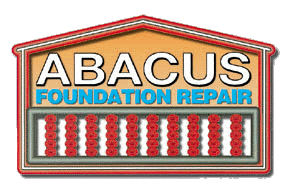
Simple Steps to Avoiding Foundation Movement
We Value
S.P.I.R.I.T.
Service, People, Integrity, Results, Innovation and Teamwork
Homeowners fear foundation repair, however few are aware of the simple steps they can take to eliminate the risk or minimize foundation movement. There are four subjects about which all homeowners should be concerned when it come to avoiding movement of slab foundations.
Click on any photo for a larger view.
|
Plumbing
|
| All homeowners should be concerned about plumbing. When leaks occur, large amounts of water can be discharged into the soils under the foundation. As the soils absorb the water, they can swell causing upheaval of the foundation. The water supply to a home is metered and a review of one's monthly billing will show the increase in water usage should a pressure line be leaking. No special precautions need to be taken to detect leaking pressure water lines. However there is no immediate or little evidence with a sewer line fails. Sewer lines can cause significant damage to foundations when leaks occur. PVC sewer lines can leak; however fewer leaks occur because most are relatively under 25 years old. Cast iron sewer lines have a life span of 25 to 35 years. Iron sewer lines tend to rust out. As holes increase in size, the more water they discharge under the foundation, causing noticeable sheetrock cracks in the walls and ceiling. Static pressure tests are a good way to identify leaking sewer lines. A reputable plumber can perform this test for approximately $250. |
|
Watering
|
| Watering of the foundation can help minimize foundation movement year round. The secret is the proper amount of water at the proper time in order to keep the soils from shrinking in the summer months and over expanding in the cooler, rainier months. Because foundations rest on top of many feet of soil, it can take an extreme amount of water typically to stabilize a home. A soaker hose placed about 12 inches out from the foundation or a drip irrigation system should be sufficient. Since you can only see the surface of the ground, it can be difficult to determine the amount of water that is enough. A plumber's probe works best in checking the depth to which the water has gone. Simply insert the probe into the soil; when you can push it in 2 to 4 feet, then there is probably enough water in the soil. If the probe slides into the ground with little pressure, then you probably need to cut back on the amount of time you are watering that area. Remember, not all areas around your home will need the same amount of water so be sure to test all areas. |
|
Drainage
|
| Proper drainage is a must for all homes' foundation. A good way to tell if you have proper drainage is to check 30 minutes after a good rain; if there is no water standing within 10 feet of the home, then the drainage is adequate. If water stands in pools or puddles against the sides of the foundation or paved areas, then there is concern that a correction may be in order. |
|
Landscaping
|
|
Landscaping can have a major impact on the performance of the foundation. The more plants you have, the more you have to water. Remember different plant types can affect the foundation in different ways. Larger plants require more water, and can affect foundations in different areas. Trees use about 150 gallons of water per day for every 12 inches of diameter (that's over 20 cubic feet of water per day). Trees can have roots extending 1 1/2 times the height of the tree extending far back under a foundation. As a result, sometimes this causes the center or edge of a foundation to settle. In order to minimize water consumption, trees should be at least 20 feet from the foundation. When mature trees have an effect on a foundation, Root Barriers are recommended. Root Barriers can be installed within 3 feet of the foundation and should be at least 3 feet deep in order to prevent or arrest interior foundation settlement. Shrubs that are next to a foundation should be kept at a maximum height of 3 feet and a distance of 2 feet from the foundation. Landscaped beds of flowers can trap water against the sides of the foundation. When installing or maintaining landscaping, it is important to make sure there is proper adequate drainage. |

